We thought we had misheard; sitting on the back row of the four-wheel drive bus – yes, I did write 4×4 bus! There’s a picture below, just to prove it. There are four of them on Fraser Island, which is just as well because the only ‘highway’ on this 125-kilometre strip of sand is a perfectly straight eighty-kilometre beach facing the Pacific ocean.
The rest of the roads, as you can see in the photo below, are sandy tracks the width of a single vehicle. There are passing places – and all traffic must give way to the buses – but, unless you are a regular off-road driver with a powerful four-wheel drive car, you won’t get more than a few hundred metres from the arrival jetty at the Kingfisher Resort. In very dry weather, our driver/guide told us, it’s not unusual to find five or six cars bogged down in the first mile of the eastward track. There is, I would imagine, a lucrative rescue trade…
Our guide, who was also driving the four-by-four bus, really had used the words ‘Central Station’. As a frequent traveller to cities which do have ‘central stations’ this was confusing since we were approaching the middle of the ridge that defines the backbone of the island. But to economies that have a proud history of logging, the idea of a central logging station is not unusual.
Although Fraser Island should be just a strip of perfect sand, it’s not. The whole spine of the island comprises a sub-tropical rainforest that sits less than an hour’s trip from Hervy Bay (pronounced Harvy Bay), an hour’s plane ride North of Brisbane, but a different world…
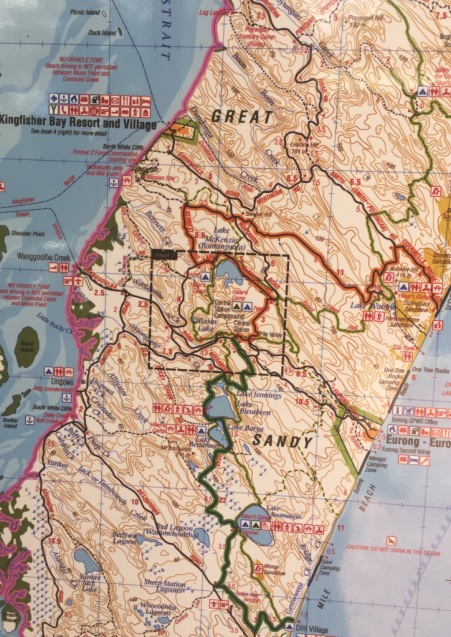 This Central Station was the place to which the felled logs were brought for transportation down to the pier, near what is now Kingfisher Point, during the period of active logging on the island, which lasted from 1863 to 1991.
This Central Station was the place to which the felled logs were brought for transportation down to the pier, near what is now Kingfisher Point, during the period of active logging on the island, which lasted from 1863 to 1991.
The sub-tropical forests of the island were and are, rich in species and host many of the tallest examples of their biological families.
But none of them should exist in this hostile place, at all. Fraser Island is essentially a vast enclave of what should be drifting sand dunes. The island is composed, entirely, of sand. In other words, it is a desert. Forests don’t grow in deserts…
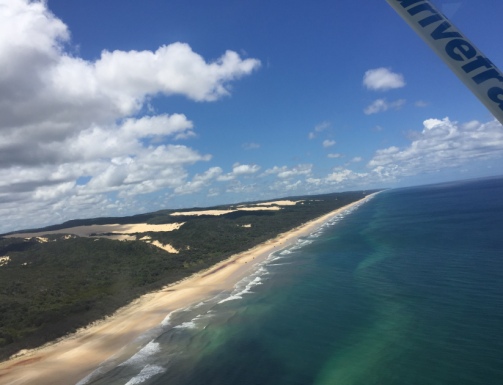
Experience tells us that deserts are devoid of all but the most hardy of life-forms, such as sidewinder snakes and stag-beetles. But here, some of the world’s tallest trees sit within their own ecosystem fed by plentiful rainfall that not only builds significant and unexpected lakes but also overflows hundreds of gallons of pure water into the Pacific, every second…
There are two reasons for the lushness and fertility of this strange and exotic place: the first is the mixture of dry sand and organic matter, which forms a water-repellent barrier and leads to the formation of lakes and stream beds.
The second is something called mycorrhizal fungi and is the reason that Fraser Island does not have, nor needs, soil.

Image source: http://www.rootgrow.co.uk/mycorrhizal-fungi.html
Mycorrhizal fungi are an example of a symbiotic organism – a relationship (in this case) of plant and fungi which is wholly beneficial to the larger plant. They have been around since the fossil record began, around five hundred million years ago. They enable plants to extract nutrients and hold onto water in a way that allows sand to behave like soil. The roots of plants provide a home for the fungi; the fungi feed the roots…
They are the reason that Fraser Island is not one vast sand dune. Fraser Island is the only such example on the planet…
The only way to appreciate the full wonder of the forests, here, is to walk through them. Central Station is now an information centre and the base for a series of walks through the valleys and gulleys, below.
It is hard to believe that you are walking in the middle of a twenty-kilometer width of a tropical island made, entirely, of sand.
The sky is above you, somewhere, and sometimes puts in an appearance!
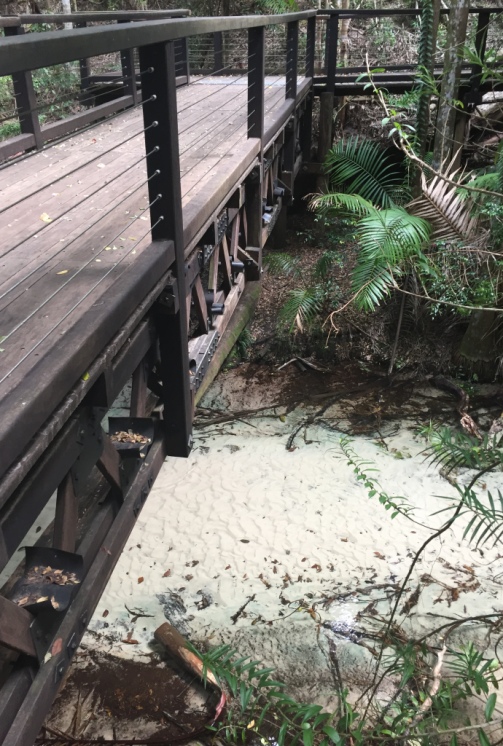 The water in the streams is so clear that you can’t see it from above. In the above image, the pure sand is at a depth of about a metre of water, but you wouldn’t know unless you were right over it!
The water in the streams is so clear that you can’t see it from above. In the above image, the pure sand is at a depth of about a metre of water, but you wouldn’t know unless you were right over it!
Sadly, our tour ended too soon, and we boarded the remarkable bus for another serious bouncing and part two of the day… Lunch and an eighty-mile beach…

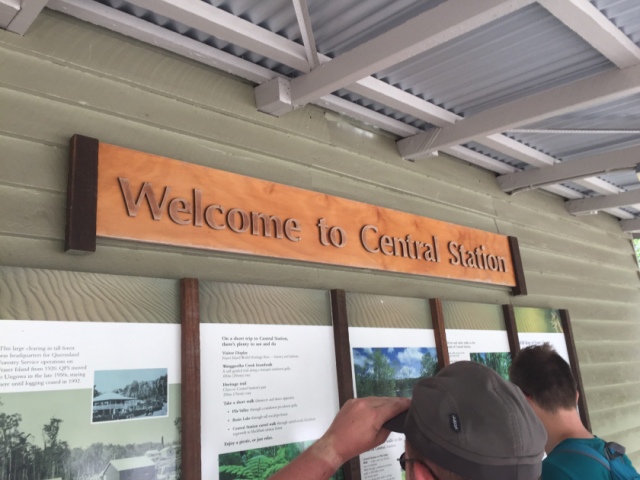
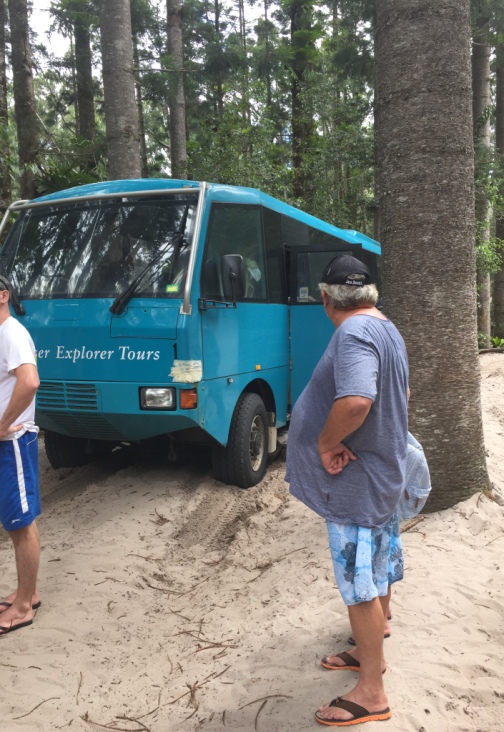
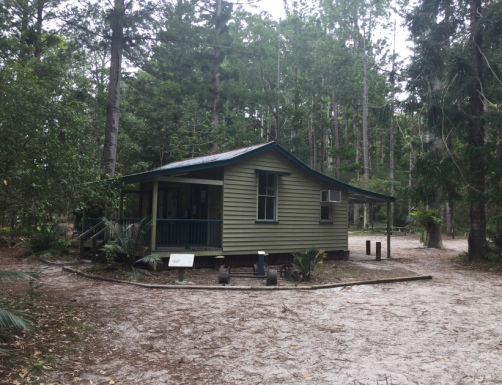
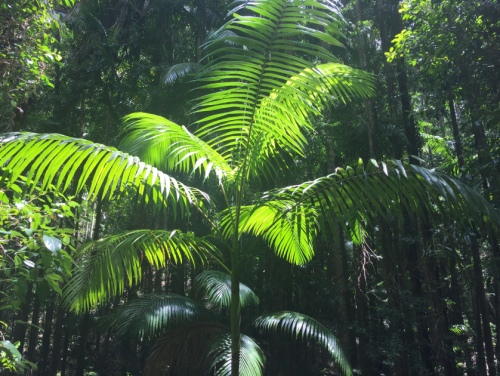
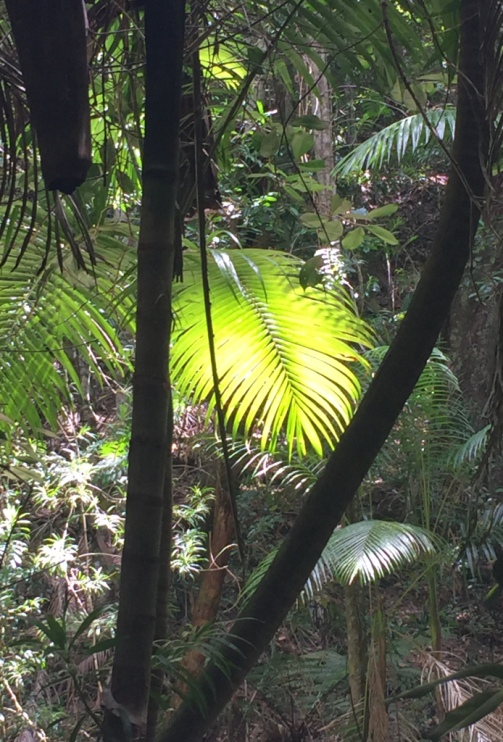

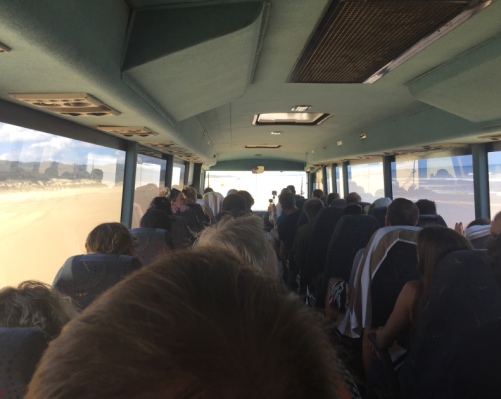
Amazing photos! I feel like we are on holiday with you!
When writing, I feel you all are! Our Australian sojourn is, sadly, coming to an end this weekend…
But you have had the best time so no regrets!
None at all. And we’ll be happy to get our cat and dog back!
😊
Reblogged this on Anita Dawes & Jaye Marie.
Thank you, Ladies.
What an amazing place! So glad I hitched a ride this morning, as I wouldn’t have missed this trip for the world. Your explanation as to why the trees were even possible was particularly relevant to me, for I know all about that fungi. (don’t ask me to spell it!) for as a bonsai grower, this fungi is essential to their well being, and I can usually smell if it is there!
Glad you were there to catch it. I didn’t know about The bonsai- that’s very interesting.
growing bonsai is quite an art, I learn something new about all the different tree species all the time…
I can imagine. I love them. There was a wonderful collection at RHS Wisley.
It’s also the reason people shouldn’t dig up forest wildflowers (lady’s slipper orchids, among others) and expect them to grow in their gardens; to survive, they need specific fungi associated with specific tree species.
That’s a good thing to know, Audrey. Thank you.
What a fascinating tour. Unbelievable. Thanks for sharing and for the photos of this lush place. 🙂
It was a lovely experience. I think we’ve only scraped the surface of what Australia has to offer. We’ll be back next year sometime to continue. Thank you for being with us
What an astonishing place. Fascinating about the fungi. Thanks so much for taking us with you.
Thank you, Mary. I’m glad you came along.
Fabulous just fabulous, it’s like we are with you!!
Thank you!